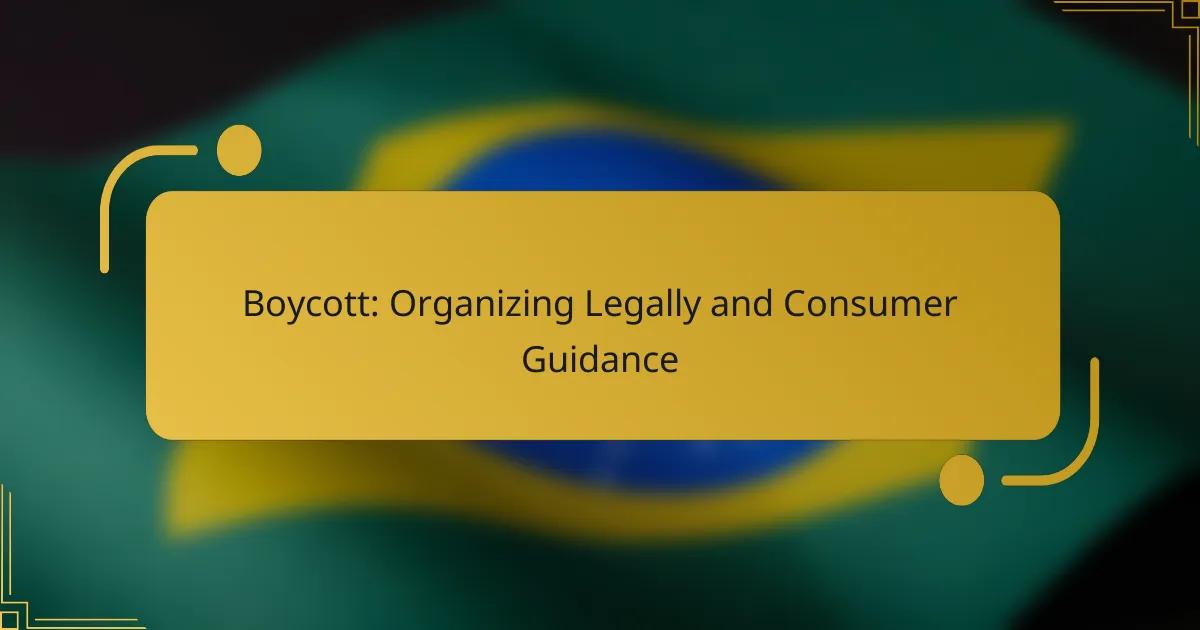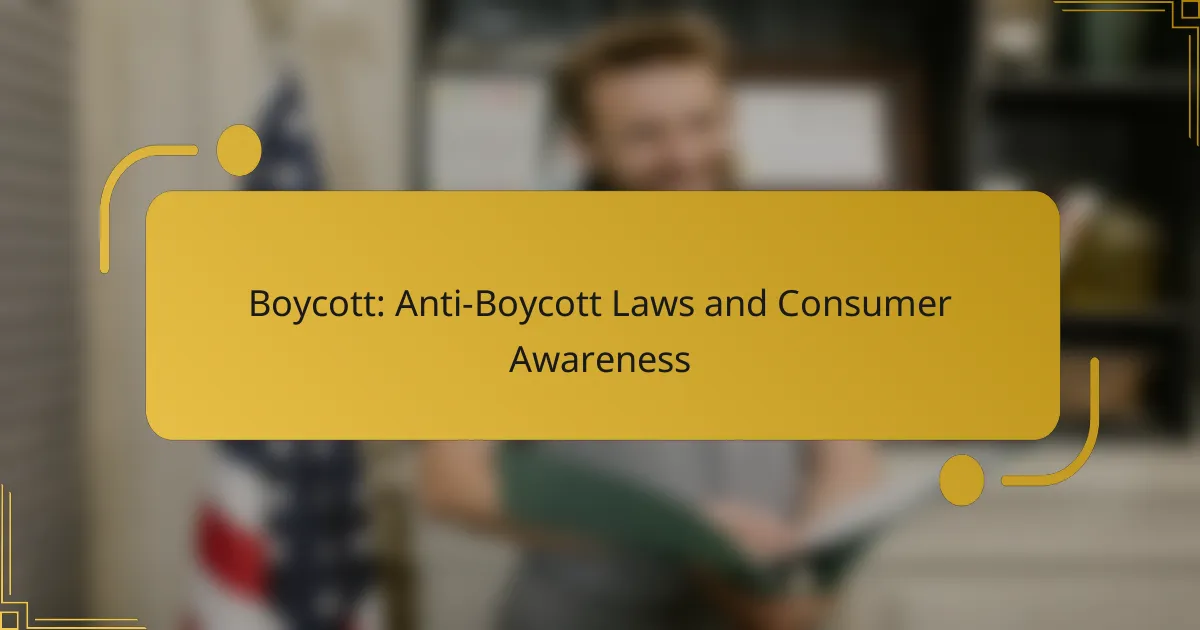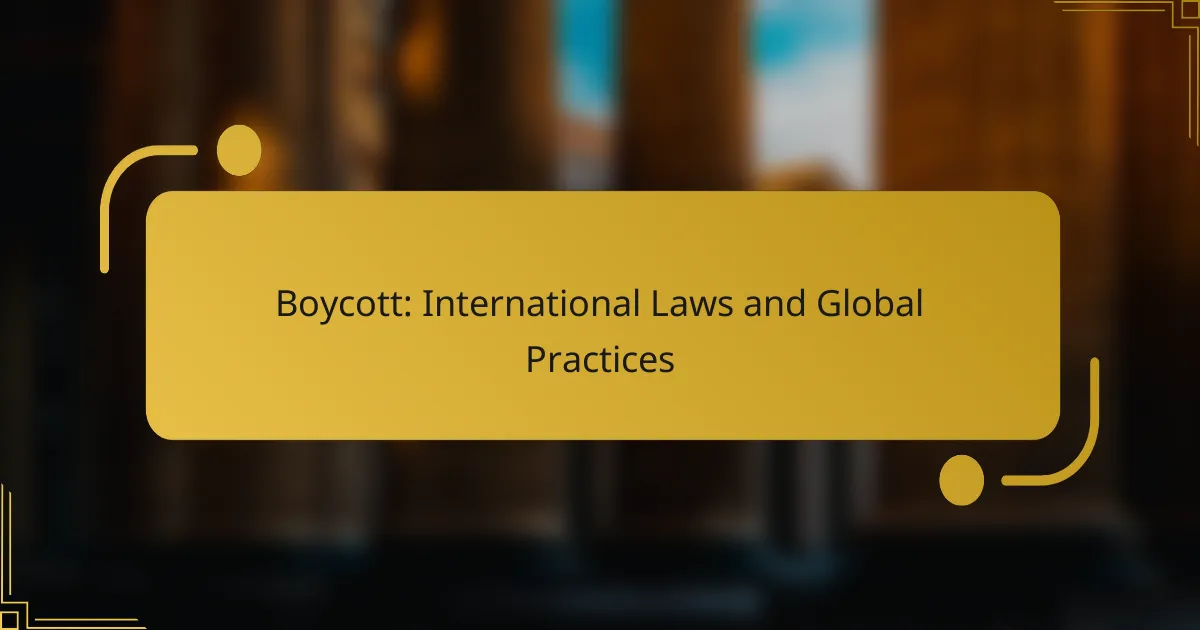Organizing a boycott can be a powerful way to advocate for change, but it requires a clear understanding of the legal framework surrounding collective actions. By knowing your rights and the regulations that apply, you can ensure that your efforts are both effective and compliant. Strategic planning, community engagement, and clear communication are essential to mobilize support and achieve your goals.
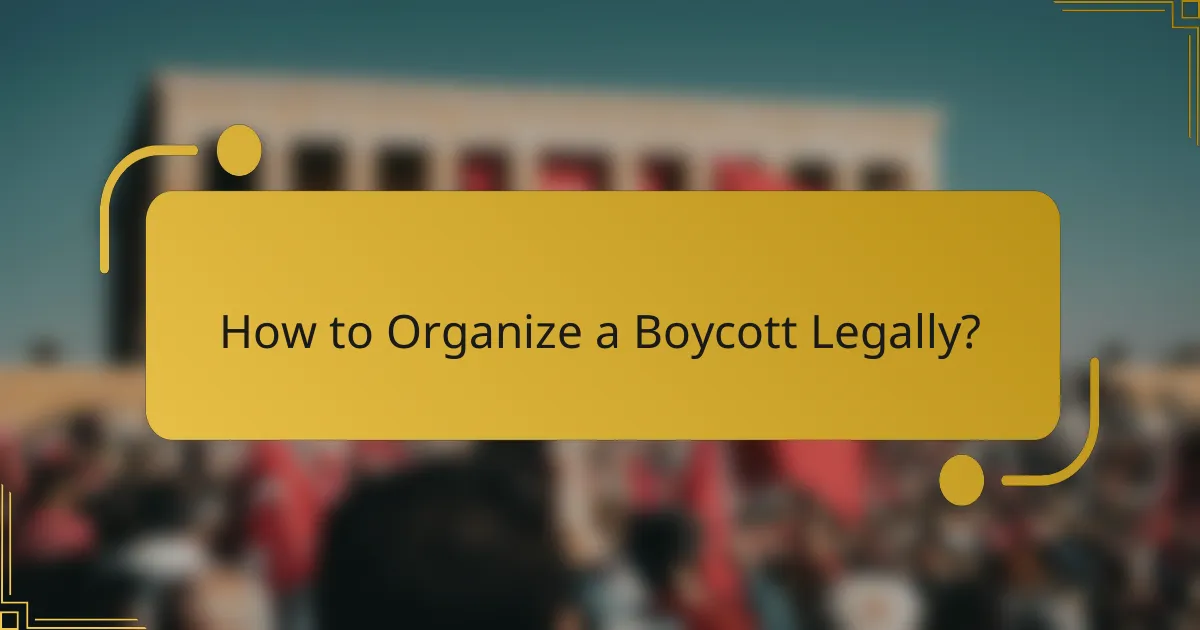
How to Organize a Boycott Legally?
To organize a boycott legally, it is essential to understand the laws governing collective actions and ensure compliance with relevant regulations. This involves being aware of your rights, the rights of others, and the legal implications of your actions.
Understanding legal frameworks
Legal frameworks surrounding boycotts can vary significantly by country and region. In many places, the right to organize a boycott is protected under free speech laws, but there are limitations, especially concerning anti-discrimination laws and anti-trust regulations.
Understanding these frameworks helps in navigating potential legal challenges. For example, in the United States, the National Labor Relations Act protects certain boycotts, while in the European Union, competition laws may restrict collective actions that could harm market competition.
Steps for legal compliance
To ensure legal compliance when organizing a boycott, start by researching local laws that apply to collective actions. This may include understanding labor laws, consumer protection laws, and any relevant anti-discrimination statutes.
Next, consider drafting clear objectives for the boycott and communicating them transparently. This clarity helps avoid misunderstandings and potential legal issues. Additionally, keep records of all communications and decisions made during the organizing process.
Consulting legal experts
Consulting with legal experts is crucial when organizing a boycott to ensure you are fully aware of your rights and obligations. Legal professionals can provide insights into the specific laws that apply to your situation and help you navigate complex legal landscapes.
Consider reaching out to attorneys who specialize in labor law, consumer rights, or civil liberties. They can help you understand the potential risks and advise on best practices to minimize legal exposure.
Documenting the process
Documenting the boycott process is essential for legal protection and transparency. Keep detailed records of all communications, decisions, and actions taken during the boycott. This documentation can serve as evidence if any legal disputes arise.
Consider maintaining a timeline of events and collecting statements from participants. This can help establish the legitimacy of the boycott and demonstrate that it was organized in good faith.
Local laws and regulations
Local laws and regulations play a vital role in how a boycott can be organized. Different jurisdictions may have specific rules regarding public demonstrations, advertising, and the use of social media for organizing efforts.
Familiarize yourself with local ordinances that may affect your plans. For instance, some cities may require permits for public gatherings, while others may have restrictions on the distribution of materials related to the boycott. Understanding these local nuances can help avoid legal complications.
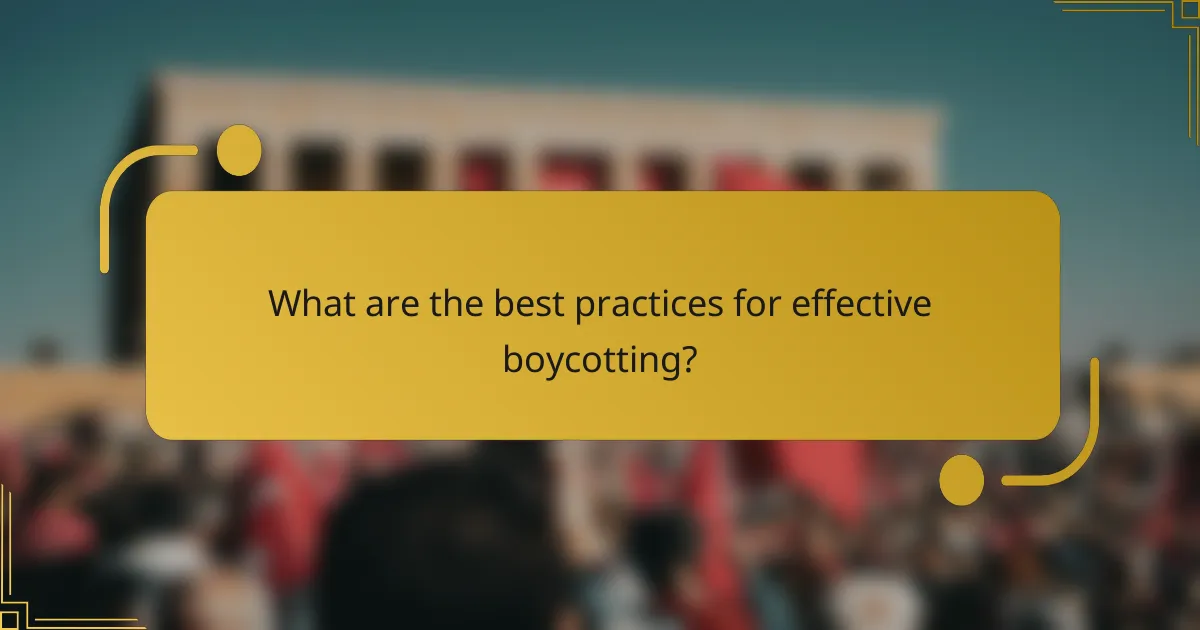
What are the best practices for effective boycotting?
Effective boycotting involves strategic planning and community engagement to achieve specific goals. By setting clear objectives, building support, utilizing social media, and engaging with local businesses, you can enhance the impact of your boycott.
Setting clear objectives
Establishing clear objectives is crucial for any boycott. Define what you aim to achieve, whether it’s raising awareness about a social issue or pressuring a company to change its practices. Specific goals help maintain focus and measure success.
Consider using the SMART criteria—Specific, Measurable, Achievable, Relevant, and Time-bound—to articulate your objectives. For example, a goal could be to reduce a company’s market share by a certain percentage within a specified timeframe.
Building community support
Community support amplifies the effectiveness of a boycott. Engage local groups, organizations, and individuals who share your objectives to create a united front. Host meetings or workshops to discuss the boycott and its importance.
Utilize local networks to spread the word. Collaborate with community leaders and influencers who can help rally more participants. The more people involved, the greater the potential impact on the targeted entity.
Utilizing social media
Social media is a powerful tool for organizing and promoting boycotts. Create dedicated pages or hashtags to raise awareness and share information about the boycott’s objectives and progress. Regular updates keep supporters engaged and informed.
Encourage participants to share their experiences and reasons for joining the boycott online. This not only spreads the message but also fosters a sense of community among supporters. Use visuals and compelling stories to enhance engagement.
Engaging with local businesses
Engaging with local businesses can strengthen your boycott efforts. Approach them to discuss the reasons behind the boycott and encourage them to support your cause. Many local businesses may be willing to join your efforts if they see a potential benefit to their community.
Consider organizing events or promotions that highlight businesses supporting the boycott. This can create a positive feedback loop, where community members are encouraged to support those businesses while boycotting the targeted entity.

How to communicate your boycott effectively?
To communicate your boycott effectively, focus on clarity and consistency in your messaging. Clearly articulate the reasons for the boycott and the desired outcomes to engage your audience and encourage participation.
Creating a messaging strategy
A strong messaging strategy is essential for a successful boycott. Start by defining your core message, including the specific issues at stake and the actions you want supporters to take. Use simple, direct language to ensure your message resonates with a broad audience.
Consider segmenting your audience and tailoring messages to different groups. For example, social media posts may differ from formal communications to stakeholders. Consistency across all platforms helps reinforce your message and build trust.
Using press releases
Press releases can amplify your boycott’s visibility and reach. Craft a concise press release that outlines the reasons for the boycott, key facts, and any relevant statistics. Include quotes from organizers or affected individuals to add a personal touch.
Distribute your press release to local and national media outlets, as well as relevant online platforms. Follow up with journalists to encourage coverage and provide additional information if needed. This proactive approach can significantly enhance public awareness.
Engaging influencers
Engaging influencers can help broaden the reach of your boycott. Identify individuals or organizations with a strong following that align with your cause. Approach them with a clear explanation of the boycott and how their support can make a difference.
Consider offering influencers specific ways to participate, such as sharing your message on social media or attending events. Building relationships with influencers can lead to more sustained support and increased visibility for your cause.

What are the potential risks of organizing a boycott?
Organizing a boycott can lead to various risks, including legal challenges, damage to reputation, and economic consequences for local businesses. Understanding these risks is crucial for effective planning and execution of a boycott.
Legal repercussions
Boycotts can sometimes lead to legal issues, particularly if they are perceived as anti-competitive or if they violate specific regulations. In some jurisdictions, organizing a boycott may attract scrutiny under antitrust laws, especially if it involves collusion among competitors.
To mitigate legal risks, it is advisable to consult with a legal expert familiar with local laws. Ensuring that the boycott is based on legitimate grievances and does not involve misleading information can help protect organizers from potential lawsuits.
Reputation management
Organizing a boycott can significantly impact the reputation of both the targeted entity and the organizers. While a successful boycott can enhance the credibility of the organizers, it may also alienate certain consumer segments or stakeholders who disagree with the cause.
To manage reputation effectively, clear communication is essential. Providing transparent reasons for the boycott and maintaining a respectful tone can help preserve goodwill among supporters and the general public.
Economic impact on local businesses
Boycotts can have unintended economic consequences, particularly for local businesses that may not be directly involved in the issue at hand. A boycott targeting a large corporation could inadvertently affect smaller suppliers or retailers reliant on that corporation.
To minimize negative economic impacts, consider promoting alternative businesses that align with the boycott’s goals. This approach can help sustain local economies while still advocating for change.
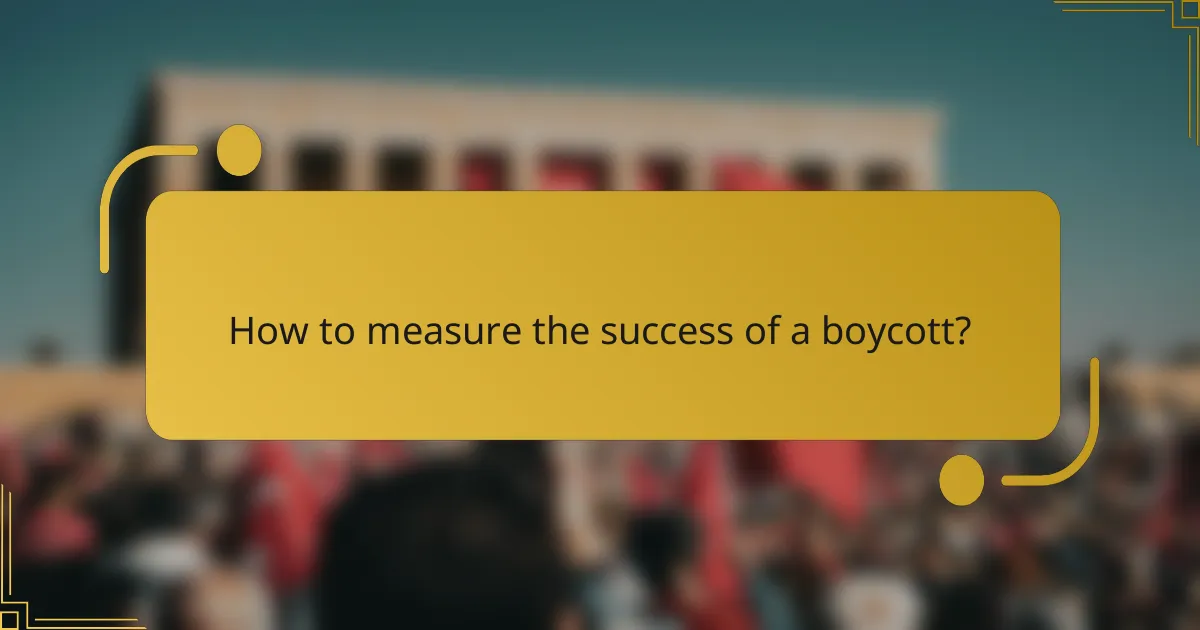
How to measure the success of a boycott?
Measuring the success of a boycott involves assessing various factors, including public engagement, economic consequences, and alignment with the boycott’s goals. Success can be defined through specific metrics that indicate whether the boycott has influenced consumer behavior or corporate practices.
Defining success metrics
Establishing clear success metrics is essential for evaluating a boycott. Common metrics include changes in sales figures, shifts in brand perception, and social media engagement levels. For instance, a significant drop in sales or a surge in negative online sentiment can indicate that the boycott is having an effect.
Consider setting both quantitative and qualitative goals. For example, aim for a specific percentage decrease in sales or a targeted number of social media shares related to the boycott. This dual approach provides a comprehensive view of success.
Tracking public response
Monitoring public response is crucial for understanding the impact of a boycott. Utilize social media analytics tools to gauge sentiment and engagement. Pay attention to hashtags, mentions, and overall conversation volume related to the boycott.
Surveys and polls can also provide direct feedback from consumers. Asking participants about their awareness of the boycott and their likelihood of participating can yield valuable insights into its reach and effectiveness.
Evaluating economic impact
Assessing the economic impact of a boycott involves analyzing sales data and market trends. Look for changes in revenue for the targeted company, as well as any shifts in market share. A notable decline in sales over a defined period can signify that the boycott is resonating with consumers.
Additionally, consider the broader economic implications, such as potential job losses or changes in supplier relationships. These factors can provide a more comprehensive understanding of the boycott’s overall effectiveness and influence on the market.
